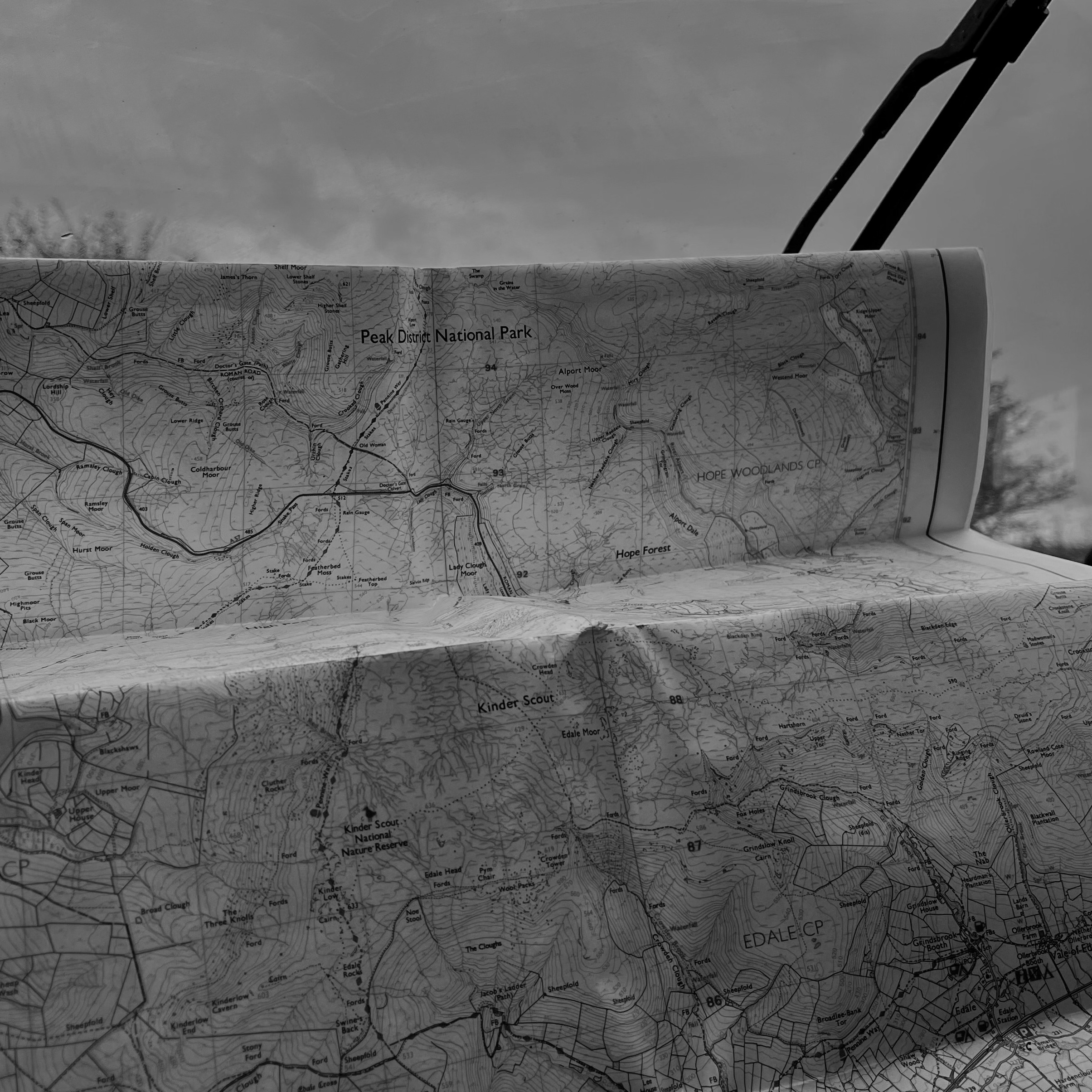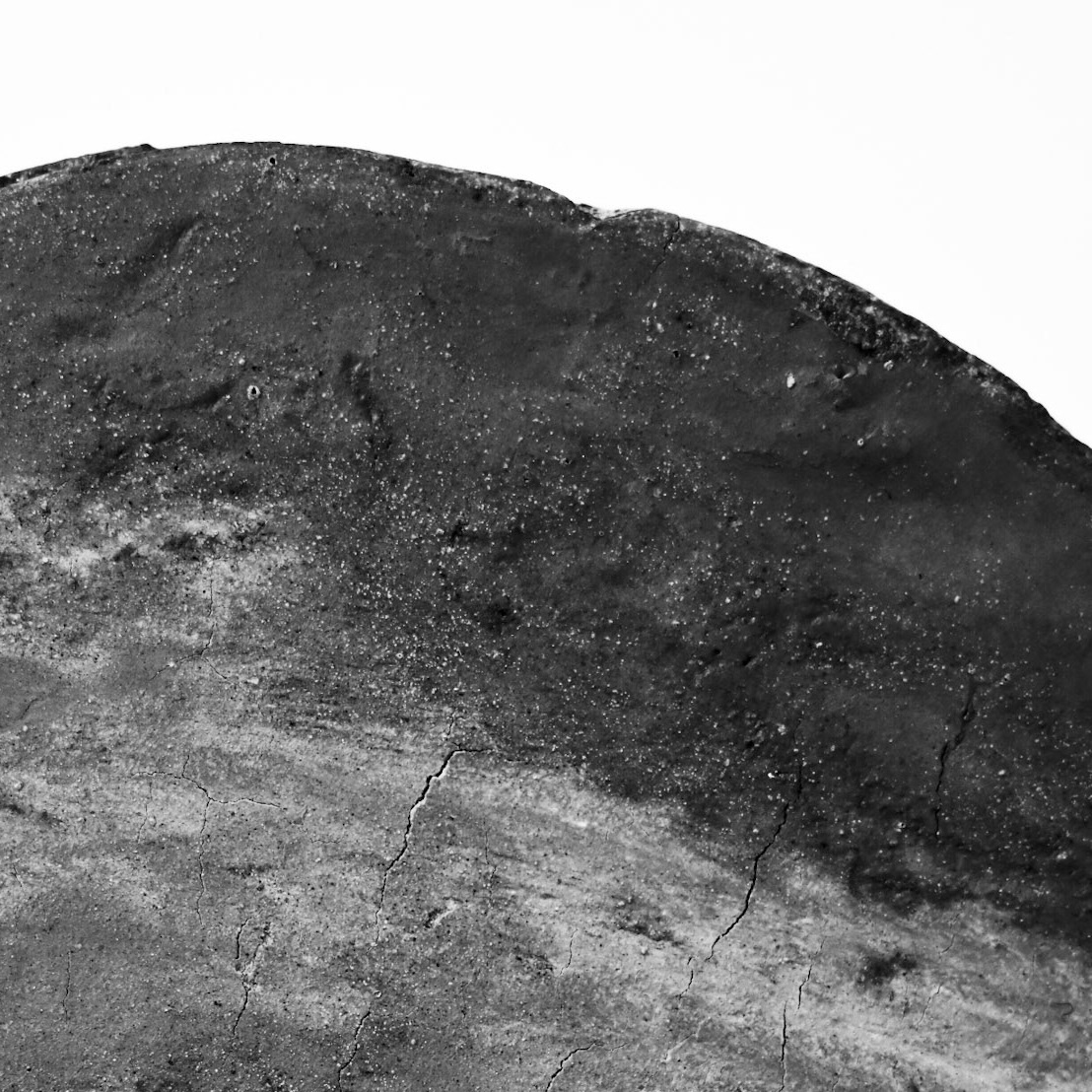
Map of Millstone markers in Peak District

Map of Millstone-making area in Peak District
Millstones: a back story
Millstones date back to the 18th and 19th centuries. They were used to grind grain into flour in the mills around the Peak District. Weighing approximately 2.5 tonnes each, the millstones were used in pairs to grind the grain, with the base stone staying stationary whilst the top stone spun above, grinding the grain into flour. The base stone usually had a dome shape, with the top stone slightly concave. The hole in the middle of a typical millstone was how the grain passed through the millstones to turn into flour.
The Peak District has been known for centuries for its millstone production and was the biggest producing area of millstone making in the UK. By the 19th century, these millstones made in the Peak District were exported worldwide. The Peak District was a great area for making millstones due to the stone found in the area.
Millstones started to become abandoned as there became less need to use them for traditional industrial purposes. In the 19th century, machines started replacing millstones in the mills, which could grind the grain much quicker than gritstone millstones, which would wear down quickly and require regular recutting. This change came very quickly, which meant that often, half-finished millstones would be left on the moorlands where they were made. Around 1,500 millstones are estimated to have been abandoned throughout the Peak District, mainly located around the areas of Hathersage, Burbage and Stanage Edge.
Millstones are now often used as boundary markers in the Peak District. They are used as entry points to the national. park, and have become iconic symbols and signage for the Peak District, to mark the region's history and cultural importance.
letsgopeakdistrict.co.uk. (2020). The Intriguing Millstones of the Peak District. [online] Available at: https://letsgopeakdistrict.co.uk/intriguing-millstones-of-the-peak-district/.
influence of millstones
I am interested in looking at millstones in the Peak District, as they are the most iconic feature of the area and are seen whenever you enter the Peak District. Due to unnatural millstones, it juxtaposes the natural and raw landscape of the rest of the Peak District. This opposition between unnatural and natural shows how, even in a rural countryside area away from urban life, there still are signs of industrialisation and a long history of humanisation.
My upbringing revolved around climbing the rocks and stones of the natural landscape. I would constantly learn about the geology of the land I was exploring, finding new facts and passages in the dirt and the rock formations. It would not be until later on, when revisiting this landscape with more knowledge of the land, that my adventuring in the dirt, clay and earth of the Peak District as a child would influence my love of craft within the landscape.


Gritstone
A rough and very coarse sandstone, which was created due to sand being laid down and piled onto the seabed 300 million years ago, when the land area was below sea level, gritstone has become a significant part of the geology of the Peak District. The dark peak, where most of the millstone grit is found, is in the Northern parts of the Peak District. The geology of this area differs from the white peak found in the central and southern parts of the Peak District due to how the gritstone has shaped the landscape to create rocky valleys and steep, sharp edges. Contrasting the white peak's limestone, the dark peak's exposed gritstone creates darker, more dramatic hues in the landscape.

Burbage taken on film

Lawrencefield taken on film: photo credit Abbie Fowler
A tale of two quarries
Throughout this unit, my material exploration consists of developing advanced knowledge of the Peak District landscape. With the focus mainly lying with two areas of the Dark Peak, which are iconically populated by millstones: Burbage Quarry Millstones and Lawrencefield Quarry Millstones.
The millstones in the Peak District have many different uses. Mainly used to either grind or crush materials, they were also sometimes used to sharpen tools or pulp apples for cider making. In Burbage, the millstones were predominantly used for grinding grain into flour. This would've been the most common use for millstones, and they would grind grains such as oats, barley and rye. In Lawrencefield, however, one of the main uses for Millstones would be to grind wood pulp for paper. These stones are classed as pulp stones and would be used later on in the 19th century.
Peaklass (2024). Peak District Millstones. [online] Peaklass | Peak District Photography. Available at: https://peaklass.com/the-millstones-of-the-peak-district/

Map of Burbage

Map of Lawrencefield
millstones of burbage
To better understand the millstones on which I will be basing my project, I went to Burbage in the Peak District. I aim to use the scale of real-life millstones to recreate smaller-scale millstones out of clay. I want to do this to get a better representation of such a significant landmark in this area and to spread more awareness of these iconic stones.
From conversations I have had with people about millstones, the consensus was a question about what these strange, out-of-place stones were doing in this area. Through this project, I want to highlight the extraordinary history of the Peak District area and bring more appreciation to the stories behind these stones.
Millstones come in various sizes and are often cut in half with no central hole or a more iron-rich grit stone covering. This is due to the differences in the requirements that mill factories would give when the stones were made in the quarries.




Millstones of Lawrencefield
Lawrencefield has the most millstones in one constituted area in the Peak District. Due to the quarries in this area, they would use the gritstone to make millstones, and it is a direct track to the old grain mills of Sheffield. It is a significant area of the Peak District and a popular area for climbing in the quarries. Hundreds of millstones are abandoned by the sides of the paths and down the valleys in this area, all stacked on each other and covered in moss. This area of millstones intrigues me due to the vast number that are piled together, abandoned by people who would've spent a hard, long time crafting the millstones in the quarries nearby when no longer needed by the factories of the cities.





Looking at the negative spaces
The spaces in between, the curves and holes cut and created by the millstones stacked behind and around. The forgotten space, for the forgotten millstone.
In a change of direction, which is evidenced and explained on my Development page linked opposite, I have decided to look into the shapes and negative spaces of the millstones in more detail.




